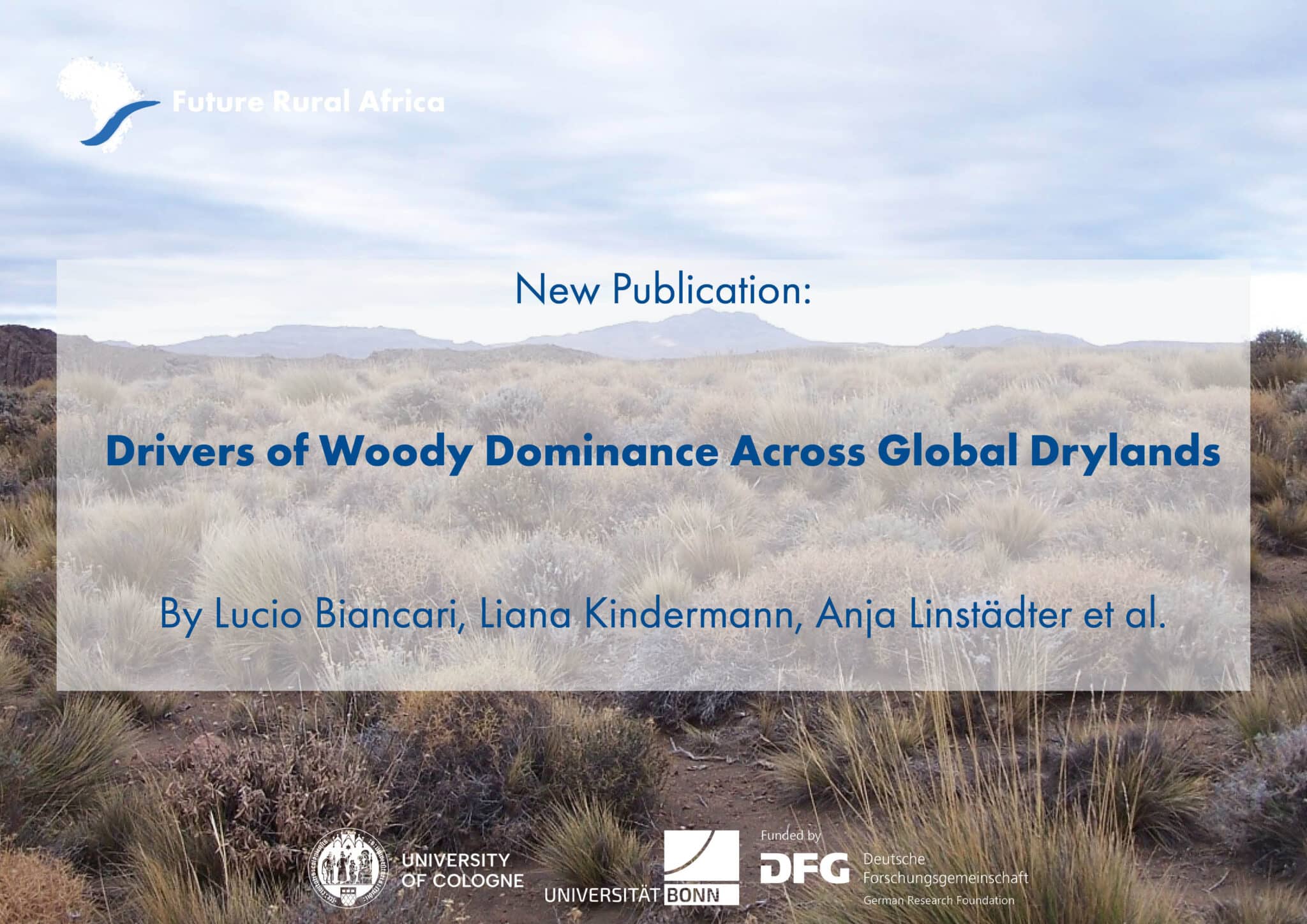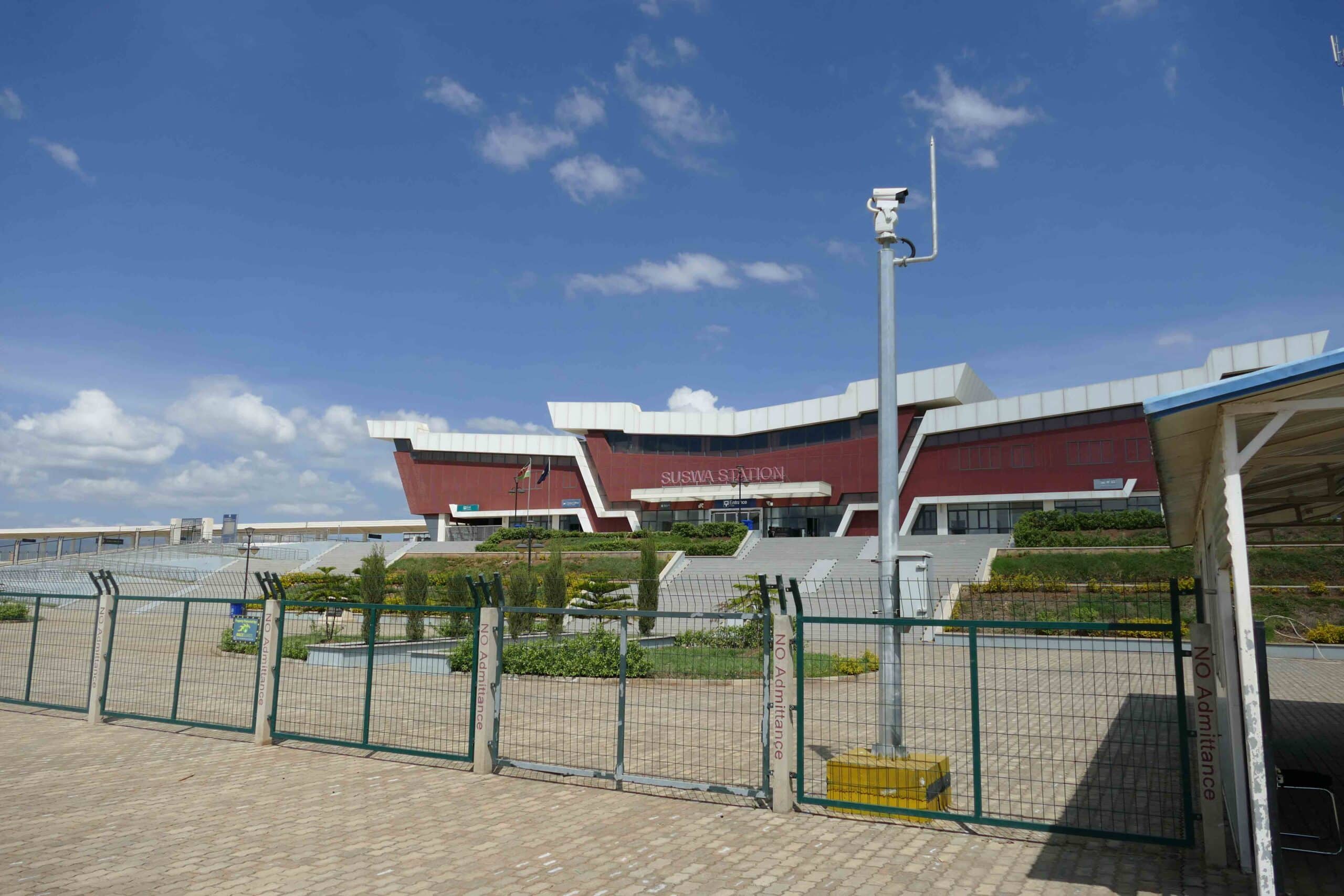By Lucio Biancari (Universidad de Buenos Aires),Liana Kindermann (Project A01 Future Carbon Storage), Anja Linstädter (Project A01 Future Carbon Storage) et al.
Abstract
Increases in the abundance of woody species have been reported to affect the provisioning of ecosystem services in drylands worldwide. However, it is virtually unknown how multiple biotic and abiotic drivers, such as climate, grazing, and fire, interact to determine woody dominance across global drylands. We conducted a standardized field survey in 304 plots across 25 countries to assess how climatic features, soil properties, grazing, and fire affect woody dominance in dryland rangelands. Precipitation, temperature, and grazing were key determinants of tree and shrub dominance. The effects of grazing were determined not solely by grazing pressure but also by the dominant livestock species. Interactions between soil, climate, and grazing and differences in responses to these factors between trees and shrubs were key to understanding changes in woody dominance. Our findings suggest that projected changes in climate and grazing pressure may increase woody dominance in drylands, altering their structure and functioning.
Reference
Biancari, L., Kindermann, L., Linstädter, A. et al. 2024. Drivers of woody dominance across global drylands. Science Advances, Volume 10 (41), DOI
Image: María Valeria Aramayo. Pilcaniyeu, Argentina.






